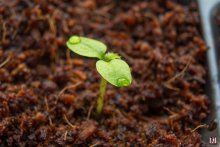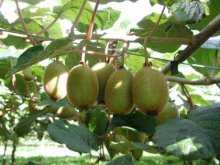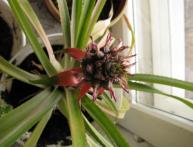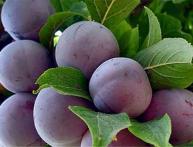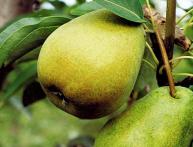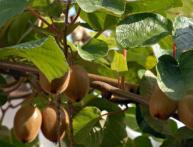How to grow kiwi at home: tips for beginners

China is considered the birthplace of kiwi; it was there that it was first noticed, and from there it spread throughout the world. Kiwi can be grown both as an ornamental plant, since its shoots visually closely resemble a succulent vine, and for the sake of tasty and juicy fruits.
The plant can easily be grown at home from simple seeds, and by providing it with all the necessary conditions, it will also bear fruit regularly. We will look into the article about exactly what conditions the plant needs to be provided and what kind of care it simply needs.
Content:
Preparing for planting kiwi
It is very important to properly prepare for planting in order to get the outcome you are counting on. Preparation includes several stages. First, try to find an unprocessed kiwi fruit. Only in this case will you be able to get seeds that will germinate in the future. Pay attention to the degree of its ripeness - the fruit should not be unripe.
It is better if the kiwi is very ripe, even soft, but not spoiled. To plant, you will need a small mug or a special pot in which seeds will germinate. Plastic plates, paper towels, and a plastic container are also useful.
With these simple accessories you can build an excellent greenhouse.
Prepare the soil for the plant.In order for the kiwi to feel as comfortable as possible, you need to mix peat, perlite, vermiculite and organic fertilizers in equal parts. A plant planted in such a soil mixture will thank you with rapid growth and a bountiful harvest.
Kiwi will require plenty of sunlight to germinate. If it is not enough, the plant may not sprout at all. Therefore, if you plant kiwi in winter, provide it with additional lighting.
How to germinate kiwi seeds?
Inside the fruit there are a huge number of small seeds that are practically invisible and are always eaten along with the fruit. But, you can grow a beautiful large plant from them if you follow the correct sequence of actions. In order to separate the seeds without damaging them, you need to carefully mash the pulp of the fruit and dilute it in a glass of water at room temperature. Stir. Seeds at the same time they will float to the top, they need to be carefully collected and dried.
The second stage is seed germination. To do this, take a small cup, pour just a little warm water, and add dry seeds there. Moisture is the only thing needed for small sprouts to emerge from the seeds.
The seeds need to stay in water for about 7 days. This period is enough for the seeds to be saturated with moisture and ready for germination. During this week, you need to replace the water with fresh water 2-3 times so as not to breed additional bacteria. When the seeds begin to open, they should be moved to a small greenhouse.
To do this, take a paper towel, moisten it with water, and place it on the bottom of a plastic or regular plate. Place the seeds on top of a wet towel and cover them with a plastic container.This way you will create an imitation of a small greenhouse, and the seeds will begin to grow even faster. Place greenhouse in a sunny place, and within a few days the seeds will begin to actively grow and will be ready for full planting.

Take the prepared soil mixture, moisten it a little, carefully pour the seeds on top, and sprinkle with dry soil literally a few millimeters. After planting, the kiwi needs to be watered carefully. We recommend doing this with a spray bottle, which will help avoid overflowing and moisten the soil evenly over the entire area.
Next, place the vessel in a warm and sunny place. Remember, kiwi comes from warm countries, so you need to create the most similar conditions for it. As soon as the first leaves appear on the surface, the kiwis need to be planted in separate pots, where they will live for the first time.
You should not choose medium or large pots in the hope that you will not have to repot the plant longer. This opinion is wrong, if the pot is large and there is a lot of soil, the root system begins to actively develop, and the outer part of the plant practically does not grow. Therefore, it is very important to select a pot that matches the size of the plant.
Subtleties of plant care
There are a few more subtleties that you definitely need to know when growing kiwi at home. In order for a plant to bear fruit, you need to have female and male plants. The exception is the only variety called “Jenny”.
Video about growing kiwi from seeds:
The plant does not like dry soil, so you need to carefully monitor the level of soil moisture in the pot. At the same time, overwatering and the formation of a swamp can lead to rotting of the root system and death of the plant.
Many housewives like to take plants outside or onto the balcony in the summer. Remember, kiwi does not tolerate winds. In addition, a sharp drop in temperature, which is often observed at night, can destroy the plant. Therefore, you need to carefully monitor the ambient temperature so that the plant does not feel unwell.
In order for the kiwi vine to always be healthy and look beautiful, you need to regularly feed the plant with organic fertilizers. It is recommended to fertilize in the spring, 2-3 times, so that the plant receives the maximum amount of nutrients during the growing season of the plant, and not to fertilize the kiwi while the fruit is forming.
The fruits can be harvested when they are easily separated from the vine - this is the main sign that they are ripe. It is also recommended to apply a layer of mulch around the plant in the form of grass clippings, straw or tree bark. This will significantly reduce the amount weed around the kiwi, and will improve the plant's drainage.

As is clear from the article, growing kiwi from seeds at home is not at all difficult. To do this, it is enough to adhere to certain rules for caring for the plant and properly prepare for planting it.

